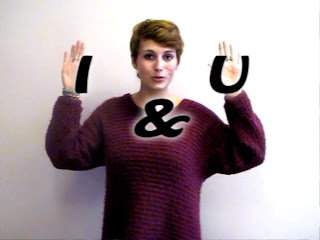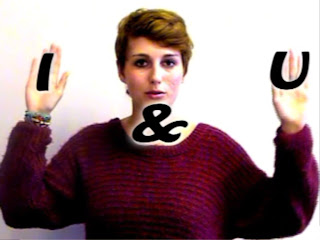Deconstruction Analysis
There are several generic conventions I have found from deconstructing existing digipaks. I deconstructed "Mumford and Sons - Babel", "Coldplay -Mylo Xyloto" and "Arctic Monkeys - Favourite Worst Nightmare".
All of the digipaks had a clear house style. For example, Coldplays digipak had the same style graffiti pattern running through the whole digipak and similar colours throughout reinforcing the house style. The clear house style on all the digipaks I have seen, from online to real life examples have a house style. This means my digipak needs to have a house style to fit in with generic conventions. A house style also attracts the audience to a digipak because it is a style they like and recognise. My house style needs to be attractive and appropriate for my audience to encourage them to buy the digipak.
On the front of the digipak, the band/artist name and album name were featured. The style of the presentation of the band/artist name and album name varied widely from position to font style and colour because of the changing house styles from digipak to digipak. Coldplays album subverted these conventions. Only the album name was featured on the front cover of the digipak. This may be because Coldplay are a very established band and they're album name is very unique so wouldn't be mixed up with another band's digipak. The font style and colour of the band/artist name and album name are repeated on the spine of the digipak to help enforce the house style.
On the spine and generally on the back of a digipak is a symbol representing what record label the band/artist is signed to. I have discovered this is a generic convention. Therefore, before I start making my digipak, I need to research different record labels and decide which one would be best for my artist so I can use their symbol on my digipak to make my work look as realistic and professional as possible.
On the back of the digipak, the tracks for the album are displayed which is a generic convention. The layout of these vary due to varying house styles. The tracks are always listed in the order they are played on the album. Therefore, I can experiment with the layout of my tracks and the font to keep with my house style, but my tracks need to be kept in order to fit with generic conventions.
The CD is never just a CD I have found on the digipaks I have deconstructed. The CDs are part of the artwork of the digipak. They are decorated in a style which fits in and compliments the house style. This has shown me that I need to consider my CD design aswell as my digipak artwork to have a fully designed digipak.
Before I started deconstructing digipaks, I thought that a generic convention would be that the band/artist would be featured on the front of the digipak. However, I have found that this is not always the case within the indie genre. Two of the digipaks I have constructed, Coldplay and Arctic Monkeys, had no images of members of the band on their digipaks. Other digipaks I have looked at in the indie genre also have a lack of images of the band/artist. This shows me that I do not have to follow the convention of having a image of a person on the front of my digipak to attract the indie target audience. After some more research, I found that in the pop genre there was a stronger generic convention of having images of the artist/band on the front of the digipak. This suggests that the importance of this convention varies from genre to genre.
The album name normally is one of the songs on the album. For example, the Mumford and Sons digipak I deconstructed; Babel was the first track on the album. This suggests to me that my album name has to be on eof the songs on my album to keep to generic conventions. This could be Glue which is the song I have used for my music video, or it could be another song I would display on the track list at the back of my album.
All of these generic conventions I have found I will consider and use in my work to make my digipak look as realistic as possible so if it did enter the market it would sell well making my artisr successful.
I have also looked at different templates and layouts of digipaks. The digipaks I deconstructed all had a simple layout which folded out. This is why I decided to look at different layouts of digipaks. From researching these, It has given me many different ideas about what template I could use to make my digipak to make it unqiue and stand out in the busy music industry market.














_svg.png)


























